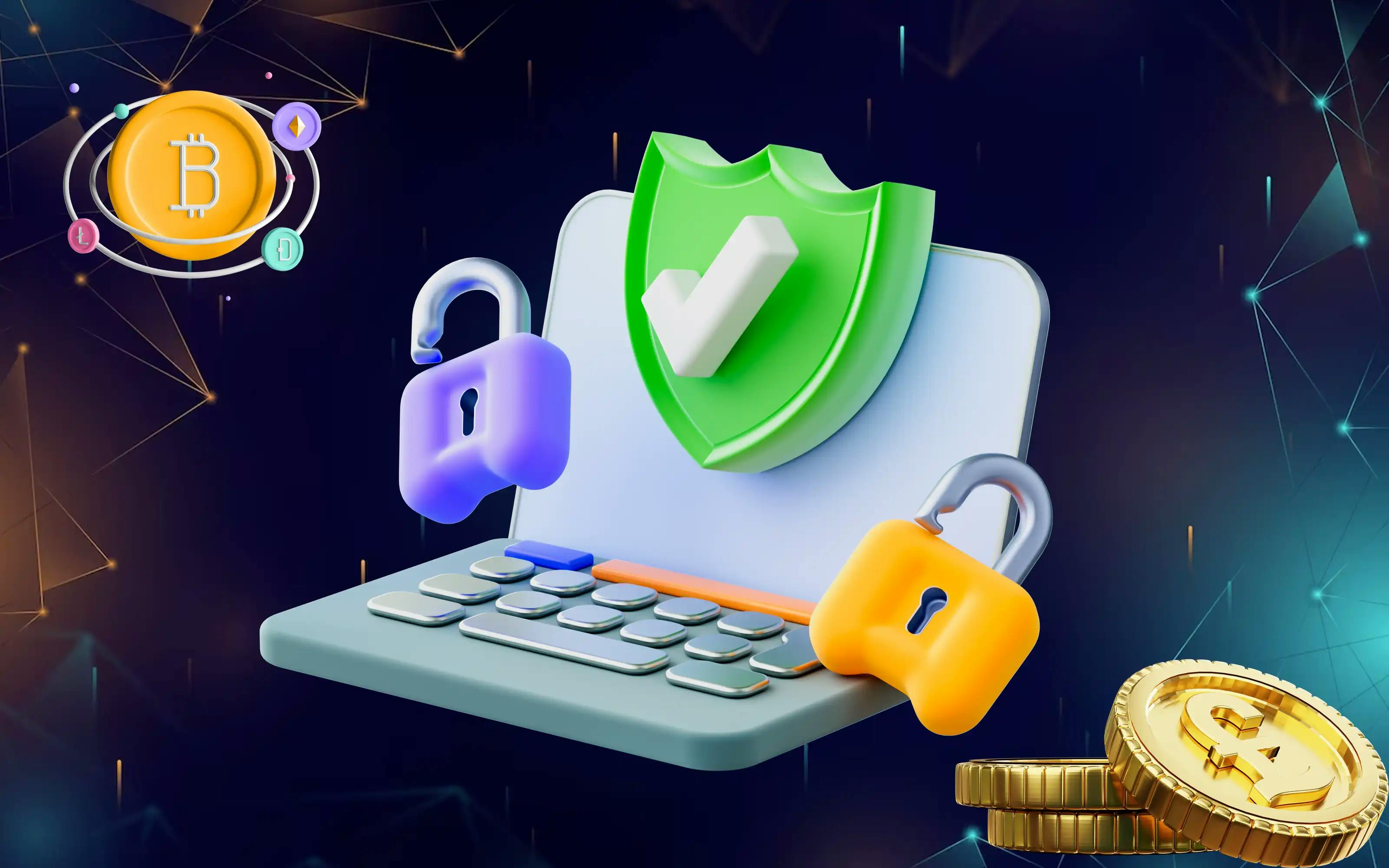
Token Standards for Real Estate NFTs: ERC-721 and ERC-1155
The world of real estate is undergoing a transformative shift with the advent of Non-Fungible Tokens (NFTs). These unique digital assets have gained immense popularity and are revolutionizing the way properties are owned, traded, and represented. As the real estate industry embraces the potential of NFTs, it becomes crucial to understand the token standards that underpin their functionality.
We will explore two prominent token standards specifically designed for real estate NFTs: ERC-721 and ERC-1155. By delving into the intricacies of these standards, we will gain a deeper understanding of their features, use cases, implementation challenges, and comparative analysis. This exploration will provide valuable insights for real estate professionals, developers, and enthusiasts looking to harness the power of NFTs in the realm of property ownership and investment.
Join us on this journey as we unravel the world of token standards for real estate NFTs, and discover the immense potential they hold in revolutionizing the way we interact with properties in the digital age.
NFTs in Real Estate
Non-Fungible Tokens have gained significant popularity in various industries, including the real estate sector. NFTs represent unique digital assets that can be bought, sold, and owned on blockchain platforms. In the context of real estate, NFTs can be used to tokenize and represent ownership or rights to properties, allowing for more efficient and transparent transactions.
Key points of NFTs in real estate
- Property Tokenization
NFTs enable the tokenization of real estate assets, converting them into digital tokens that can be traded on blockchain networks. Each token represents a specific property or a fraction of it. - Ownership and Transfer
NFTs provide digital proof of ownership, allowing for easy transfer of property rights. This streamlines the buying, selling, and transferring of real estate assets, reducing the need for intermediaries. - Fractional Ownership
NFTs can enable fractional ownership, dividing a property into smaller units represented by tokens. This allows for broader investment opportunities, as investors can purchase fractions of high-value properties. - Enhanced Liquidity
NFTs can potentially enhance liquidity in the real estate market by enabling fractional ownership and facilitating peer-to-peer trading. Investors can buy and sell fractions or whole properties more easily, expanding the pool of potential buyers and sellers. - Transparency and Security
Blockchain technology ensures transparency and immutability of property ownership records, reducing the risk of fraud or disputes. NFTs provide a decentralized and secure system for storing and verifying property-related information. - Access to Global Markets
NFTs can enable real estate transactions across borders, providing investors access to a wider range of properties and markets. This can be particularly beneficial for international buyers and sellers.
Importance of Token Standards
Token standards play a crucial role in the functioning and interoperability of NFTs. These standards define the rules and specifications that govern how NFTs are created, managed, and exchanged on blockchain networks. The most well-known token standard for NFTs is the ERC-721, developed on the Ethereum blockchain, but other standards like ERC-1155 and Binance Smart Chain's BEP-721 also exist.
Why token standards are important for NFTs
- Interoperability
Token standards ensure that NFTs can be easily recognized and utilized across different blockchain platforms. This interoperability allows for wider adoption, as NFTs can be exchanged and used in various applications without compatibility issues. - Consistency and Compatibility
Token standards provide a consistent framework for NFTs, ensuring that they possess certain essential properties, such as unique identification, ownership transferability, and metadata standards. This consistency enables developers and users to build applications and marketplaces around NFTs with predictable behavior. - Ecosystem Development
Standardization fosters the growth of a robust NFT ecosystem. Developers can create tools, marketplaces, and applications that are compatible with a specific token standard, driving innovation and expanding the possibilities for NFT use cases. - Community and Collaboration
Token standards create a common language for developers and users in the NFT space, facilitating collaboration, knowledge sharing, and the development of best practices. This shared understanding encourages the growth and maturation of the NFT ecosystem. - Security and Auditing
Token standards undergo rigorous auditing and testing processes, ensuring the security and integrity of NFT transactions. By adhering to established standards, developers can benefit from the collective knowledge and expertise of the community, reducing the risk of vulnerabilities or exploits.
Understanding ERC-721
ERC-721
ERC-721 is a widely used token standard for non-fungible tokens (NFTs) on the Ethereum blockchain. It was proposed by Dieter Shirley in 2017 and has since become a popular standard for creating and managing unique digital assets. Unlike fungible tokens (such as cryptocurrencies), ERC-721 tokens represent distinct, indivisible assets that have their unique properties and characteristics.
Features and Functionality
- Non-fungibility and Unique Identifiers
ERC-721 tokens are non-fungible, meaning each token has a unique value and cannot be exchanged on a one-to-one basis with other tokens. This non-fungibility is achieved by assigning a distinct token ID to each ERC-721 token. The token ID serves as a unique identifier, allowing each token to be distinguished from others within the same contract. - Ownership and Transferability
ERC-721 tokens utilize a standardized ownership model. Each token is associated with an owner address, which represents the current owner of the token. Ownership of ERC-721 tokens can be transferred using the transferFrom function, where the owner can initiate a transfer to another address. The transfer is recorded on the blockchain, updating the ownership information of the token. - Metadata and Interoperability
ERC-721 tokens support the attachment of metadata using the concept of token metadata URI. The metadata typically includes additional information about the token, such as its name, description, image URL, or other relevant attributes. The metadata is stored off-chain and can be accessed by referencing a URI associated with the token. This approach allows for efficient storage and retrieval of metadata while keeping the token itself lightweight.
Interoperability of ERC-721 tokens is facilitated through the standardization of the token interface. The ERC-721 standard defines a set of functions and events that all compliant contracts must implement. This enables compatibility between different applications, platforms, and marketplaces that support ERC-721 tokens. Developers can rely on the standard interface to interact with ERC-721 tokens consistently across various systems, ensuring seamless interoperability.
Use Cases in Real Estate
Fractional Ownership of Properties
ERC-721 tokens enable fractional ownership of real estate properties, allowing multiple investors to collectively own property and benefit from its potential returns.
The St. Regis Aspen Resort, a luxury hotel in Aspen, Colorado, tokenized a portion of its ownership through fractionalized ERC-721 tokens. Investors could purchase these tokens, representing fractional shares of the hotel. This fractional ownership model allowed investors to participate in the hotel's revenue and potentially earn returns without needing to buy the entire property.
- Tokenization of Real Estate Assets
ERC-721 tokens can be used to tokenize individual real estate assets, such as residential or commercial properties. Tokenization allows the representation of these assets as digital tokens, providing benefits like increased liquidity, divisibility, and accessibility. The Finka Building, a residential property in New York City, was tokenized using ERC-721 tokens. Each token represented ownership of a specific unit within the building. Investors could buy and trade these tokens, gaining fractional ownership and the potential for rental income from the respective units. - Record of Title and Ownership
ERC-721 tokens can serve as a digital record of property titles and ownership on the blockchain, enhancing transparency, security, and efficiency in real estate transactions.
The Cook County Recorder of Deeds in Illinois partnered with a blockchain startup to develop a system for recording property titles using ERC-721 tokens. Each property title was represented as a unique token, securely stored on the blockchain. This implementation streamlined the title recording process, reduced fraud risks, and provided a tamper-resistant record of property ownership.
These use cases demonstrate how ERC-721 tokens can revolutionize the real estate industry by introducing fractional ownership opportunities, enabling the tokenization of assets, and providing secure records of property titles and ownership. The new possibilities for investors, property owners, and market participants, make real estate transactions more accessible, efficient, and transparent.
Case Study: Implementing ERC-721 for Real Estate NFTs
The CryptoRealty Group
The CryptoRealty Group is a forward-thinking real estate company leveraging blockchain technology to tokenize real estate properties. This case study focuses on their successful tokenization of a 3-bedroom, 2-bathroom house in Florida, highlighting their plans for future property tokenization and their efforts to integrate with existing real estate platforms.
- Token Design and Smart Contract Development
The CryptoRealty Group employs ERC-721 non-fungible tokens (NFTs) to ensure each token represents a unique property and cannot be exchanged for another token. By utilizing this well-established standard for NFTs, they prioritize security and user-friendliness. Additionally, their smart contracts are open-source, allowing for transparency and peer review to ensure fairness and integrity. - Integration with Existing Real Estate Platforms
Recognizing the importance of compatibility, The CryptoRealty Group is actively working on integrating their real estate tokens with established real estate platforms. This strategic move enables seamless buying, selling, and renting of real estate NFTs by leveraging the existing infrastructure and user base. Furthermore, they are developing their marketplace dedicated to real estate NFTs, guaranteeing a secure and user-friendly experience for users. - User Experience and Adoption Challenges
The CryptoRealty Group acknowledges the critical role of user experience in driving adoption. They prioritize creating an intuitive and user-friendly environment for both buyers and sellers. By simplifying the process of interacting with real estate NFTs, they aim to attract and retain a broader user base. Adoption challenges lie in convincing potential users of the value and utility of real estate NFTs, emphasizing the secure and user-friendly nature of this new asset class. - Lessons Learned and Future Enhancements
Throughout their journey with real estate NFTs, The CryptoRealty Group has gained valuable insights. They recognize the significance of designing secure and user-friendly tokens while integrating with existing real estate platforms to leverage their established user base. In the future, they plan to enhance their tokens by introducing new features and expanding their integration with additional real estate platforms. They firmly believe that real estate NFTs have the potential to revolutionize the industry and remain committed to driving their success.
Real Estate NFT Use Cases and Token Standards Selection
Tokenizing Individual Properties
- Use Case
Tokenizing individual real estate properties allows for fractional ownership, efficient transfer of ownership, and increased liquidity in the real estate market. - Token Standard
ERC-721 is commonly used for this use case due to its non-fungible nature. Each token represents a specific property, ensuring uniqueness and ownership rights. This standard provides clear ownership records and enables easy tracking of property transfers.
Fractional Ownership and Investment
- Use Case
Fractional ownership allows multiple investors to hold shares of a real estate property, making it accessible to a larger pool of investors and enabling diversification of investment portfolios. - Token Standard
Both ERC-721 and ERC-1155 can be used for fractional ownership. ERC-721 tokens can represent shares of a property as individual non-fungible tokens, while ERC-1155 tokens can represent fractional ownership units as fungible tokens. The choice depends on the desired representation and functionality needed for the specific use case.
Real Estate Investment Funds
- Use Case
Real estate investment funds pool funds from multiple investors to create diversified portfolios of real estate assets, providing investors with exposure to a range of properties. - Token Standard
ERC-1155 is a suitable choice for real estate investment funds. It allows for the creation of both non-fungible tokens representing individual properties and fungible tokens representing shares in the investment fund. This flexibility enables efficient management and tracking of investors' holdings within the fund.
Real Estate Marketplaces
- Use Case
Real estate marketplaces provide platforms for buying, selling, and trading real estate NFTs, offering a streamlined process for property transactions. - Token Standard
Both ERC-721 and ERC-1155 can be used for real estate marketplaces. The selection depends on the desired functionality and the variety of token types expected on the platform. ERC-721 provides a straightforward representation of individual properties, while ERC-1155 offers more flexibility in supporting multiple token types within a single contract, allowing for different real estate asset classes to be traded on the marketplace.
Property Rental and Leasing
- Use Case
NFTs can be used to facilitate the rental and leasing of real estate properties, providing secure and transparent agreements between landlords and tenants. - Token Standard
ERC-721 is often preferred for this use case. Each token represents a specific property, making it easier to track ownership and rental agreements. Rental terms, lease agreements, and other relevant information can be stored as metadata within the token, ensuring transparency and immutability.
Technical Considerations and Implementation Challenges
- Non-Fungibility vs. Fungibility
One of the key technical considerations is the requirement for non-fungibility in representing individual real estate properties. ERC-721 tokens provide a straightforward solution for this as each token represents a unique property, ensuring clear ownership records and distinct identities. On the other hand, ERC-1155 tokens support both non-fungible and fungible tokens within the same contract, offering more flexibility but potentially introducing complexities in distinguishing individual properties. - Scalability and Gas Efficiency
Scalability is a crucial aspect to consider, especially when dealing with a large number of real estate properties. ERC-721 tokens treat each property as an individual contract, which can result in higher gas costs and potential scalability limitations, especially when performing batch transfers or mass minting. In contrast, ERC-1155 tokens allow multiple token types to be managed within a single contract, providing more efficient batch transfers and potentially reducing gas costs. - Flexibility and Token Management
The level of flexibility and token management capabilities required for real estate NFTs should be taken into account. ERC-721 tokens offer a simpler design and implementation process, making it easier to understand and integrate with existing platforms. However, ERC-1155 tokens provide more comprehensive functions and events, allowing for advanced token management features such as minting, burning, and batch transfers. The choice between the two standards depends on the desired functionality and the project's future enhancements. - Smart Contract Security
Implementing secure smart contracts is essential to protect real estate NFTs and ensure the integrity of transactions. Both ERC-721 and ERC-1155 standards have been widely used and audited, but it is crucial to follow best practices in smart contract development, conduct thorough testing, and undergo security audits to mitigate potential vulnerabilities and risks.
Interoperability and Ecosystem Integration
Consideration should be given to the interoperability of the chosen token standard with existing real estate platforms, marketplaces, and decentralized finance (DeFi) protocols. Compatibility with other standards such as ERC-20 and ERC-721 can facilitate seamless integration and allow for wider adoption of the real estate NFTs within the blockchain ecosystem. - User Experience and Adoption Challenges
Implementing a user-friendly interface and ensuring a smooth user experience for buyers, sellers, and investors is critical for the success and adoption of real estate NFTs. User education and onboarding processes should be considered to familiarize users with the concept of NFTs, wallets, and token management, promoting widespread acceptance and usage.
Addressing these technical considerations and overcoming implementation challenges requires a skilled development team with expertise in blockchain development, smart contract programming, and security practices. Thorough testing and iterative development cycles are essential to ensure a robust and reliable real estate NFT platform. Additionally, monitoring the evolving landscape of token standards and industry best practices is crucial for staying updated and making informed decisions during the implementation process.
Conclusion
In conclusion, real estate NFTs offer significant potential to transform the real estate industry by introducing liquidity, fractional ownership, and transparent ownership records. The choice between ERC-721 and ERC-1155 token standards depends on specific project requirements. ERC-721 tokens excel in representing individual properties as unique assets with clear ownership records, while ERC-1155 tokens provide flexibility with both non-fungible and fungible tokens within a single contract, allowing for fractional ownership and efficient token management. As the technology continues to evolve, we can expect the emergence of new token standards and advancements in scalability, gas efficiency, interoperability, and token management features. Despite challenges in user experience, adoption, and technical implementation, forward-thinking companies are actively addressing these issues and driving the progress of real estate NFTs.
Real estate NFTs have the potential to revolutionize how we buy, sell, and invest in properties. By leveraging the benefits of token standards like ERC-721 and ERC-1155, these digital assets offer increased liquidity, fractional ownership options, and transparent ownership records. The choice between ERC-721 and ERC-1155 depends on the desired level of uniqueness and flexibility in representing properties. While challenges exist, such as user experience and technical implementation, ongoing innovation and collaboration within the blockchain industry are addressing these issues. As the technology evolves and new token standards emerge, real estate NFTs will continue to advance, unlocking new opportunities and reshaping the real estate market.
Start your Real Estate NFT Journey Today with NFTCreator4All. Empower Your Brand with Custom White Label NFT Solutions and Effortlessly Launch Your Own NFT Generator! Ask us now!!




